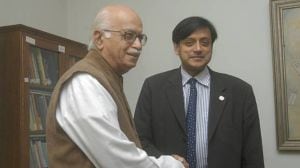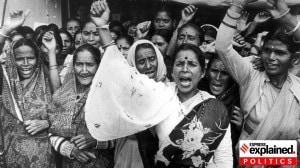Looming large but lifeless
Until a little over a century ago, Mumbai's mill lands were the fulcrum of its wealth and hubris. The epic saga of their growth and quality ...

Until a little over a century ago, Mumbai’s mill lands were the fulcrum of its wealth and hubris. The epic saga of their growth and quality of their produce would draw inevitable comparisons with Manchester, another city by the sea fired by its cotton mills. It took hardly a 100 years to burst that bubble.
The inflexible laws of economics, of socio-cultural physics, demanded that as a tattered exodus of workers was sucked into their native villages after a decade-long strike, another workforce — this time white-collared — would take over. The millhands’ angst no longer makes news, even if there were once 2,80,000 of them — the world’s largest organised labour movement, who made Parel a thrumming, purposeful hive of activity. If Mumbai’s mills hit the headlines today, it’s for entirely different reasons. The land on which they lie wasting away is worth millions of rupees to a perennially space-starved city.
To some the mills are monstrous reminders of a bitter feud that destroyed the whole industry. Toothers, they symbolise the chance to make amends for the avarice of the past. Still others prefer that the status quo be maintained the sale of mill lands is a can of worms that should remain firmly shut, especially in a time of teflon coalitions. But having said this, let it not be assumed that this city does not know how to handle their literally looming presence.
The vibrant street theatre, sarvajanik utsavs, strong communities which gave Girangaon its piquant flavour might have vanished altogether. But in their place are a more powerful junta of advertising agencies, publication houses, computer concerns. The gentrification of mill areas started in right earnest a few years ago, and only the current slump in real estate has been a deterrent.
In Parel, tired chimneys vie for attention with cylindrical volumes of Falcon Crest, the crystalline form of Phoenix, the colourful garb of their chattering-on-the-cellphone inhabitants. As life leached away from the mill estates into the Konkan, owners prepared to carve them into neat parcels for redevelopment. They met with spotted success. A slow influx of rich folk into an unfashionable neighbourhood (one ad agency wishfully pronounced their present address as Upper Worli), made it an unwitting hub of retro chic.
At a time when functionalism is the buzzword, the architecture of the mills finds itself quite fashionable. It’s not the soulless brand dished out these days under the excuse of structural expression. Mumbai’s mills are refreshing reminders that functional can mean fun — serrated rooflines which march away for many metres, sheltering within them cool volumes of North-lit space.
The men who built these mills were all specialists. Mumbai’s first cotton mill, the Bombay Spinning Mill at Tardeo, was built in 1851 by Cawosji Nanabhoy Daver. He laboured long and hard to overcome obstacles of technology, collaborating with Messrs Platt Brothers of Oldham to finally establish one, and then the Bombay Throstle Mill in 1858. The Cotton Boom of the mid-19th century paved the way for the whole of South Central Bombay to become the fiefdom of textile barons.
The earlier mills were plain, three-storied brick and timber structures, little bigger than cow sheds. The Industrial Revolution introduced architecture to the vocabulary of cast iron, allowing larger volumes to be spanned. In Europe, wood was rapidly replaced by the new wonder material in the form of cast iron columns, metal roofing and tracery work. In Mumbai, the most prominent remnants of this Age are the mills, whose forms grew grandeur, their spaces lit by huge glazed North-light windows. The skyline of that era became a cliche for industrial cities all over: tall chimneys which interrupted the sawtoothed run of roofs.
Architects like Munchershaw N Chandabhoy designed the Meyer Sassoon, the Phoenix, New City and Alliance Mill. There were also English firms like Gostling & Morris who designed the Apollo, Kohinoor, Finlay and the Jacob Sassoon mills and were succeeded by Chambers & Fritchley who designed extensions to many city mills.
Between them they created honest structures which gave the city its identity.



- 01
- 02
- 03
- 04
- 05




























